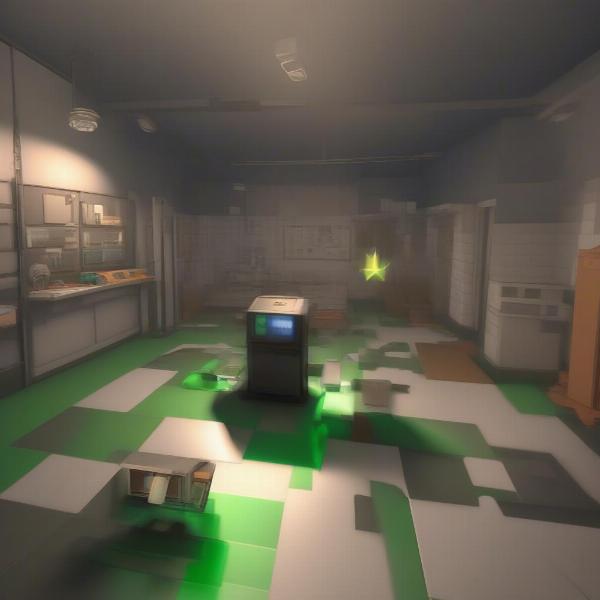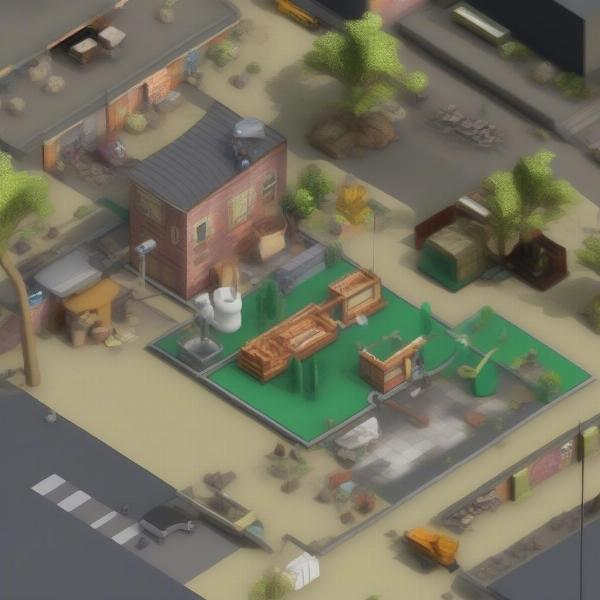GameMaker is a popular choice for indie developers, known for its user-friendly interface and robust 2D game development capabilities. But a common question arises: Can Gamemaker Make 3d Games? At SupremeDuelist.blog, we’re diving deep into the heart of this question, examining what GameMaker offers for creating 3D experiences and what limitations developers might face. We’ll explore the extent of its 3D features, the types of 3D games it can handle, and how it stacks up against dedicated 3D game engines.
This article aims to provide a comprehensive overview of GameMaker’s 3D capabilities. We’ll analyze the technical aspects, discuss practical applications, and give you a clear picture of whether GameMaker is the right tool for your 3D game development aspirations. Whether you’re an experienced developer or just starting out, understanding GameMaker’s 3D potential is crucial.
GameMaker’s 3D Capabilities: What’s Under the Hood?
GameMaker has evolved significantly, now supporting basic 3D rendering. It’s important to note that its 3D capabilities are not as fully-featured as dedicated 3D engines like Unity or Unreal Engine. However, it’s still capable of creating many kinds of 3D games. So, can GameMaker make 3D games that are actually playable and engaging? The answer is a qualified yes.
The engine allows you to create 3D models, though not with as much complex tooling as dedicated 3D software. GameMaker supports simple 3D primitives (cubes, spheres, etc.) and can import some custom models created in external applications. The rendering pipeline is designed primarily for 2D, meaning 3D objects are rendered within this framework. This can sometimes lead to challenges regarding advanced graphical effects and optimization.
How Does GameMaker Handle 3D Rendering?
GameMaker’s approach to 3D rendering is layered on top of its existing 2D engine. It uses perspective projections, allowing you to simulate 3D space using a virtual camera. While it doesn’t have a full suite of tools for advanced 3D rendering techniques, like ray tracing, it provides enough to create functional 3D worlds. Basic lighting and texturing are supported, allowing for a reasonably visually appealing environment.
Here are some key aspects of GameMaker’s 3D rendering:
- Limited Advanced Rendering Features: You won’t find built-in tools for techniques like real-time global illumination or detailed shader customization.
- Focus on Simplicity: The engine prioritizes ease of use, making 3D development more accessible to newcomers.
- Object-Based System: Similar to its 2D capabilities, GameMaker’s 3D uses objects and instances, making manipulation relatively straightforward.
 Gamemaker 3D rendering view
Gamemaker 3D rendering view
What Types of 3D Games Can You Make?
So, given these capabilities, what type of 3D games can you realistically create with GameMaker? You can certainly make games with simple 3D visuals, including:
- Simple 3D Platformers: Games using basic 3D navigation and platforms, not unlike classic 3D arcade titles.
- First-Person Explorers: Basic movement and interaction with 3D environments.
- Top-Down 3D Games: Games that display the player and environment from an overhead perspective.
- Puzzle Games: Games that use 3D geometry in combination with classic puzzle mechanics.
- Low Poly Art Style Games: Games that use basic shapes and texture to achieve an appealing low-poly look.
However, it’s also important to acknowledge some practical limitations. Games requiring complex physics, highly detailed environments, or large-scale open worlds may be difficult to develop. Games with advanced lighting, like those in the AAA gaming space, would likely be out of GameMaker’s scope.
“GameMaker is great for quickly prototyping ideas, even in 3D. It’s more than capable for smaller projects and learning the fundamentals. However, for ambitious 3D titles you may need to use more powerful options,” says expert game developer, Amelia Jones.
GameMaker for 3D Game Development: Advantages and Disadvantages
Choosing a development tool involves weighing the pros and cons. When it comes to making 3D games in GameMaker, there are certain trade-offs to consider. Understanding the advantages and disadvantages will help you make an informed decision about whether to use GameMaker for your project.
Advantages of Using GameMaker for 3D Games:
- Ease of Use: GameMaker’s intuitive drag-and-drop interface and GML (Game Maker Language) make 3D programming more accessible, especially for beginners. This can significantly speed up prototyping and development time.
- Rapid Prototyping: The software is designed to quickly turn an idea into a basic playable game. Its streamlined workflow can benefit developers of all skill levels.
- Cost-Effective: Compared to other game engines with premium licensing options, GameMaker is very affordable, especially for small studios and solo developers.
- Large Community: GameMaker has a very active community, meaning plenty of tutorials, resources, and help is readily available.
Disadvantages of Using GameMaker for 3D Games:
- Limited 3D Capabilities: As mentioned, the 3D functionality is not as mature as in specialized 3D game engines. Complex physics, advanced rendering techniques, and large scenes can become challenging.
- Optimization Challenges: Performance optimization for 3D games can be more challenging in GameMaker than in engines designed for 3D from the ground up.
- Less Flexibility with Shaders: While you can use shaders to customize your rendering pipeline in GameMaker, the options are not as flexible as you would find in something like Unity or Unreal.
- Not Designed for Large-Scale 3D Games: If your project involves large open worlds or demanding 3D environments, GameMaker may not be the best choice.
“From a technical perspective, GameMaker’s 3D implementation is more of an add-on rather than an integral part of the engine. It’s suitable for certain kinds of 3D games but shouldn’t be considered a complete 3D solution” points out Michael Chen, senior game engine architect.
How to Get Started with 3D Game Development in GameMaker
Ready to jump in and test the waters of making 3D games in GameMaker? Here’s a quick guide to help you get started:
- Create a New Project: Start by creating a new project in GameMaker. Select the “Empty” template to start from scratch.
- Enable 3D Rendering: In the room editor, enable the 3D rendering by going to room properties and ticking the “Enable 3D” option.
- Create a Camera: You’ll need to create a camera object that will render your 3D world. Use the code to create a perspective projection camera.
- Add 3D Objects: Begin adding simple 3D primitives, like cubes or spheres. You can add more complex 3D models using external modeling tools.
- Basic Lighting: Implement basic lighting to illuminate your 3D scene. This will help with visibility and the overall look of your game.
- Object Manipulation: Use GML to control your 3D objects and manipulate them within the scene.
- Experiment and Iterate: This is crucial. Like anything in game development, the more you test and refine your project, the better it’ll be.
 Gamemaker 3D development step
Gamemaker 3D development step
Frequently Asked Questions
- Can GameMaker handle complex 3D environments? While capable of basic 3D, GameMaker struggles with highly complex and detailed environments.
- Is GameMaker good for 3D beginner developers? Yes, GameMaker is beginner-friendly for 3D, but the 3D functionality itself may still require an understanding of programming concepts.
- Does GameMaker support custom 3D models? Yes, it supports importing 3D models from other programs, though sometimes with limitations.
- What are the alternatives for creating 3D games? If you need something more powerful, you should explore Unity, Unreal Engine, or Godot as a viable alternative.
Keyword Related Questions
- What are the technical limitations of GameMaker 3D? Technical limitations include lack of advanced lighting, no ray-tracing, no support for real-time GI, and general performance issues when used with complex models.
- How do shaders function in GameMaker 3D? Shaders in GameMaker 3D can be used for custom rendering effects, but they are less flexible than what you might find in dedicated 3D engines.
- Are there any community resources for 3D GameMaker? Yes, there’s a range of tutorials, articles, and forum discussions for those wanting to learn 3D development in GameMaker.
- Does GameMaker studio support 3D assets from Blender or other 3D software? GameMaker supports certain 3D file formats and can import 3D assets from external tools.
Conclusion: Is GameMaker the Right Choice for Your 3D Game?
So, can GameMaker make 3D games? Absolutely. However, it’s not a direct competitor to dedicated 3D game engines. GameMaker can indeed be a capable and easy-to-use tool for many smaller, indie-scale 3D projects. It shines with its user-friendliness and quick prototyping capabilities, making it ideal for beginners and solo developers working on straightforward 3D concepts.
For large-scale, complex 3D games, or if you’re looking for state-of-the-art rendering features, you may be better served by using a more dedicated 3D game engine. Understanding the trade-offs is important in the project planning phase, helping you make an informed decision. As always, SupremeDuelist.blog aims to provide you with clear, concise, and valuable information, empowering you to make the best choices for your game development endeavors.
Ready to delve deeper into game mechanics and development tools? Check out our other articles for more insights!
Leave a Reply